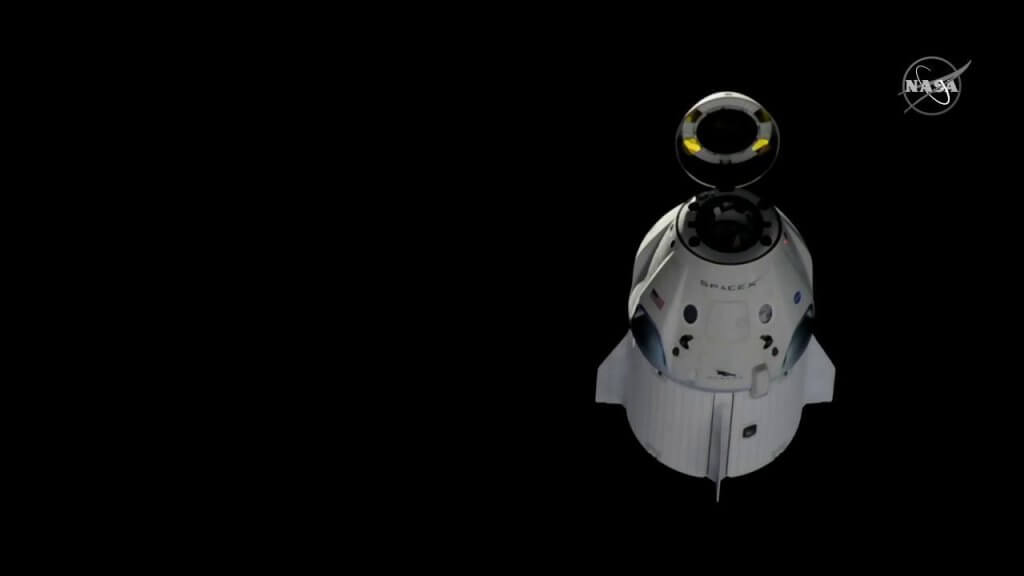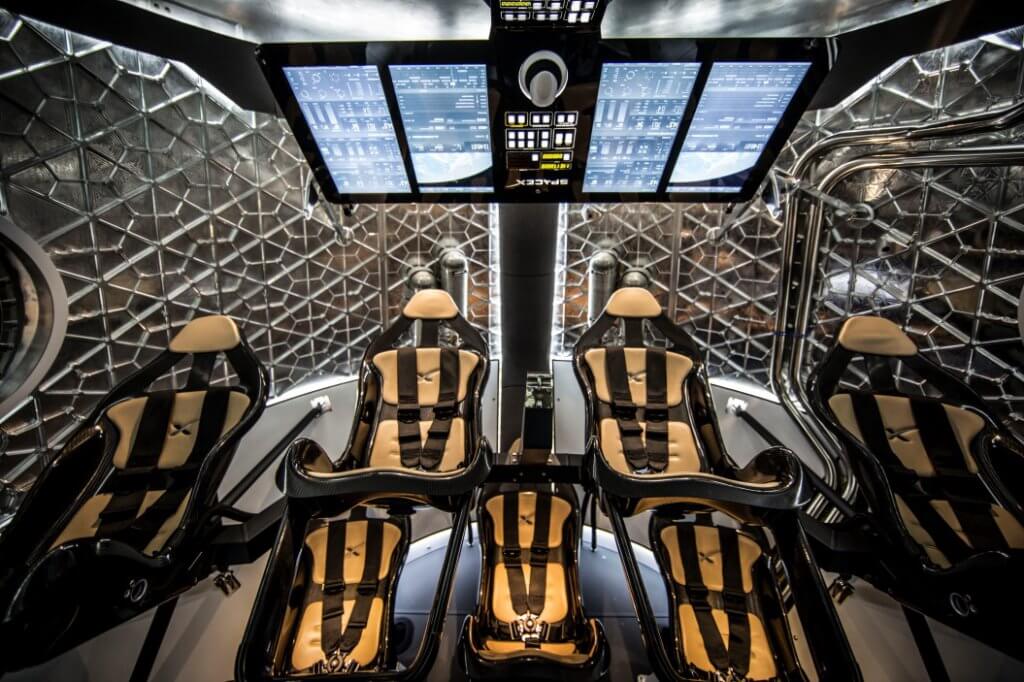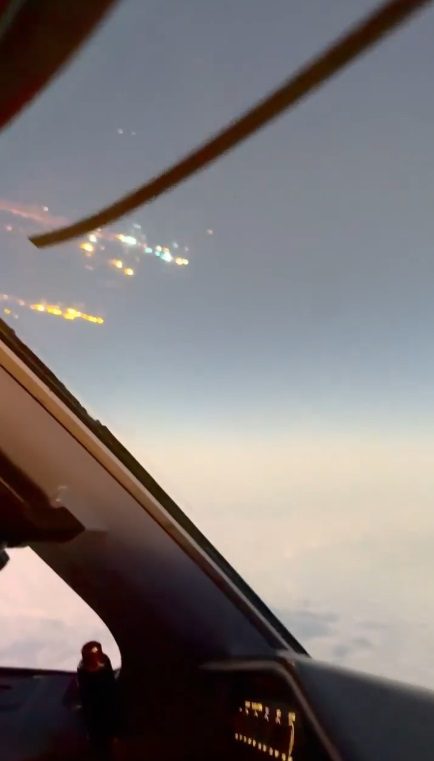A Falcon 9v1.2 FT Block 5 launch vehicle successfully launched the first unmanned test of the Dragon 2 crew capsule – called DM-1 – at 0749 GMT on 2 March. The launch took place from Kennedy Space Center, near Cape Cape Canaveral in Florida. The initial orbit achieved was a 358 x 194km at 51.6 degrees inclination. The rocket’s reusable first stage went on to land on the drone ship Of Course I Still Love You down range in the Atlantic Ocean. The expendable second stage deorbited itself to a fiery destruction as planned. The spacecraft then slowly raised itself to the orbit of the ISS.
The capsule, which is planned to fly astronauts into orbit later this year, docked with the Harmony Module of the International Space Station (ISS) at 1051 GMT on 3 March. This was after undergoing a number of tests during autonomous approach and docking to the ISS.

Crew Dragon (Dragon 2) on Demo 1 flight backs away from ISS with its nose cap still open. Courtesy: NASA TV
Aboard the capsule was an instrumented dummy astronaut nicknamed “Ripley” after the fictional female astronaut character in the Alien movie series. The capsule also carried about 180 kg of cargo.
It remained docked with the ISS until 8 March when it undocked at 0732 GMT and moved to a 401 x 395 km orbit. After jettisoning its expendable “trunk” carrier, it made an engine burn at 1253 GMT to begin its return to Earth, reentering and then splashing down at 1345 GMT in the Atlantic Ocean off the coast of Florida, from where it was recovered by ship. The mission successfully proved that the launch, docking, re-entry into Earth’s atmosphere and splashdown landing were all safe to do. (All times NASA via Jonathan McDowell).
Under commercial contracts with the operating firms, NASA will use SpaceX’s Crew Dragon 2 capsule as well as Boeing’s CST-100 Starliner capsule to ferry astronauts between Earth and the ISS. This means it will cease having to rely upon the Russian Soyuz capsules to do this task.
David Todd contributed to this story.







